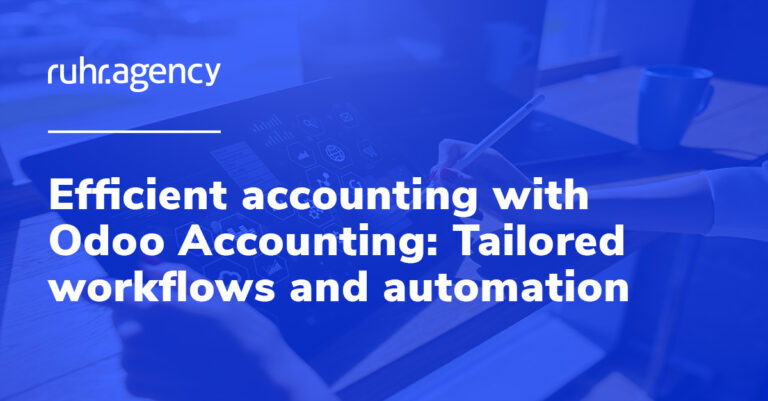As a company’s level of digitization increases, so does the amount of existing data generated by the various systems. Often, different software solutions are used in the various departments of a company, such as PMS, CMS, CRM, enterprise resource planning systems, accounting software, and many more. All these systems generate data, but in different file formats. Basically, this is not a tragedy. However, if you want to use these data for analysis, evaluation and reporting, the data must be prepared first. Two different methods are available for this purpose: Data warehousing and data lake.
Data Warehouse
Basically, all data from a company’s various systems is collected centrally. In a data warehouse, data is available in a structured and consistent form in a central system. This enables easy data access.
A data warehouse is designed to allow data extraction using data access tools. This means that data can be analyzed according to individual specifications and patterns. It is exactly these analyses that form the basis for determining important operational KPIs. Regarding the architecture of a data warehouse, there are four different areas: Source Systems, Data Staging Area, Data Presentation Area and Data Access Tools.
The first step is to provide all the data that is obtained from the various systems. The extraction, structuring and transformation of the data is handled by the staging area of the data warehouse. The data also enters the data warehouse database via such a database. This database is the so-called Data Presentation Area. The access to the stored data of the different levels is done with Data Access Tools.
A data warehouse helps separate analytical and operational systems and allows actionable data analytics in real time. These analyses range from resource determination, cost determination, process analysis to the determination of important company key figures and the creation of statistics and reports. However, a data warehouse is not only used for analysis. The allocation of data as well as its harmonization and structuring is also an important purpose of a data warehouse. A data warehouse uses data that has been collected in structured form in databases. However, if large amounts of data are available in unstructured form, a data warehouse is no longer sufficient. Therefore, at a certain point, the data warehouse is combined with a data lake.
What is a Data Lake?
A data lake is designed to ensure that storing large amounts of data is easy due to its high storage capacity, regardless of whether the data is structured, semi-structured or unstructured. At the same time, a data lake is also capable of processing large and unstructured data volumes. Different formats and different storage locations thus become a thing of the past with a data lake. Within the Data Lake, the data is professionally prepared and modeled to generate regular, automated reports and ad hoc queries on logically consistent models and validated data. A data lake is the best choice for analyzing and evaluating large volumes of data that are available in unstructured form.
Business Intelligence and Reporting
But what does Business Intelligence actually mean? Basically, BI means nothing other than business analytics. The objective is to gain insights from the data available in the company to support management decisions. The evaluation of data about the own company, the competitors or the market development is carried out with the help of analytical concepts as well as certain software and IT systems.
The insights gained enable a company to optimize its business processes as well as its customer and supplier relationships. This as a result strengthens the competitiveness of a company. Without the evaluation of the available data, management decisions would lack any basis. The advantage of business intelligence is clear: solid decisions based on big data minimize the error tolerance of decisions.
Local or cloud-based computing?
There are two different ways of processing data for BI and reporting: On-premise or in the cloud. Cloud-based data processing is provided by third-party providers such as Amazon, Google or Microsoft and offers the advantage of not having to build and operate your own server infrastructure.
Additional benefits of cloud-based computing include:
- Scalability: Cloud computing services such as Amazon Web Services (AWS), Microsoft Azure, and Google Cloud Platform (GCP) enable rapid scaling of compute and storage resources.
- Cost savings: Cloud-based computing can cut the costs of buying, setting up and maintaining on-premise servers and data centers because companies only pay for the resources they actually need.
- Flexibility: Cloud-based computing offers a wide range of computing applications.
- Rapidity: Cloud-based data processing is high performing and enables rapid data analysis and insight in real time.
- Independence: Cloud-based data processing enables location-independent access to and processing of data.
- Security: Cloud-based computing providers ensure a high level of security to protect data
Overall, cloud-based computing helps optimize your workloads, save costs, and provide faster insights for your business decisions.
What is Databricks
Regarding the applications for data processing and preparation, there are several vendors on the market. However, one vendor is increasingly emerging as the standard: Databricks is a cloud-based data platform built on Apache Spark and designed to make Big Data easier to manage and analyze. Databricks provides an integrated development environment (IDE) and tools for collaboration and automation of data-related tasks. The platform can also be used with all major cloud providers such as AWS, Microsoft Azure or Google Cloud Platform.
What are the benefits of Databricks?
During the implementation of Databricks, data is structured for data processing and data analysis, converted into a format optimized for queries, and stored in cloud storage. Databricks ensures that the already structured data is stored and harmonized in an optimized format for data processing and data analysis. This allows the processed data to be combined for reporting and analysis for information gathering. Databrick’s Machine Learning is based on an open lakehouse architecture, i.e. the combination of data warehouse and data lake, and supports Machine Learning teams in preparing and processing data. In doing so, the platform offers a variety of benefits for machine learning. One of the biggest advantages is scalability, which allows large amounts of data to be processed and models to be trained efficiently. Databricks also facilitates collaboration between teams and automates many steps of the machine learning process, saving time and resources. Databricks supports a variety of machine learning frameworks and libraries such as TensorFlow, Keras, PyTorch, Scikit-learn, and XGBoost.
The ease of managing data and resources makes it a convenient choice for companies looking to integrate machine learning into their business strategy.
Advantages of Databricks at a glance:
- Scalability: Databricks allows you to process large amounts of data and scale analytics workloads quickly.
- Flexibility: Databricks supports various programming languages such as Python, R, Scala and SQL, allowing data analysts to work with their preferred language.
- Real-time processing: Databricks supports streaming data processing so that data can be analyzed in real time.
- Collaboration: Databricks facilitates collaboration between data analysts, scientists, and engineers by allowing everyone to work in a centralized environment.
- Automation: Databricks offers tools for automating tasks, saving time and resources.
- Security: Databricks offers features such as access control and encryption to ensure data security.
Conclusion
Companies are using more and more systems that produce more and more data. However, companies can only really benefit from this data if they can use it correctly for analysis, reporting and forecasting. The best tool for processing Big Data is a data lake and the current standard Databricks. If you would like to learn more about Big Data, Data Lakehouse and Databricks, book your personal free live demo here.




